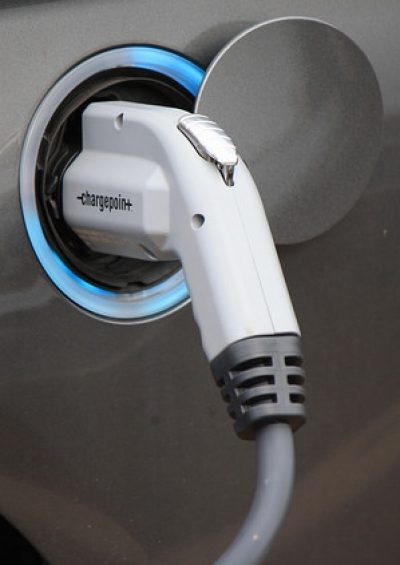E-Vehicles: Detroit’s Comeback Story?
Can US automakers win the race for future dominance in the e-vehicles market?

Credit: Noya Fields www.flickr.com
Takeaways
- The main barriers to profitable production of electric vehicles have been range, high costs and the availability of charging stations.
- Until a mass market emerges to spur more rapid innovation and drive down the cost of batteries, EVs will be an expensive fashion statement.
- China is more aggressively underwriting domestic manufacturers than the US and is building a vast system of charging stations.
- Along with the United Kingdom, France and India, China has signaled its intention to eventually ban the sale of gas-powered vehicles.
Internal combustion engines, transmissions and overall vehicle structure are the core competencies of major vehicle manufacturers. They outsource and rely on others for quality control of seats, dashboards and the like.
With regard to the future, that puts them at a disadvantage. Electronics, computers and the like are not what they do well.
The principal barriers to profitable production and wide adaptation of electric vehicles (EVs) have been range, high costs and the availability of charging stations.
Government intervention needed?
As previously in U.S. industrial history – just think of emergence of the railroads via their land grants and rights of way and the airlines with their postal contracts and municipal financing of airports – aggressive government intervention may prove necessary to create a broad enough market to overcome those challenges in the United States.
That option, however, may well be an anathema to Republican policymakers who dominate U.S. politics these days.
GM and others are introducing vehicles that can go up to 200 miles before recharging. That range will gradually improve and recharge times will come down.
Eventually, this will provide the practical range necessary for most family trips — and not just for errands and commuting.
However, until a mass market truly emerges to spur more rapid innovation and drive down the cost of batteries, EVs will remain an expensive fashion statement. In that regard, cheap gas is not an advantage.
With U.S. gas prices likely to stay around $2.50 per gallon (close to 4 liters) for the foreseeable future, electric vehicles simply cost too much more than conventional SUVs to purchase and operate overall.
Difficult urban landscape
It does not help that too many families, especially in large cities where consumers may be favoring EVs, actually lack potential charging stations. Just consider the many metro areas, like New York City, that are built straight up.
Even more spread-out cities like Washington have many homes with no driveway and whose drivers park on the street. Systems of charging stations must be constructed in front of homes across a vast swath of America to recharge batteries overnight.
Who will pay for charging stations?
Cash-strapped U.S. cities can hardly maintain water and sewage systems, ambulance services and roads now, never mind build out systems of electrical charging stations more complex and difficult to keep safe than underground cable TV systems.
In all likelihood, city governments will have to turn to private investors who must be assured of enough subscribers to make such large investments attractive.
The federal government provides tax credits up to $7,500 for the first 200,000 EVs sold by each manufacturer. That can have a boomerang effect on individual companies. For example, Tesla will soon cross that threshold and lose its subsidies — without yet producing a vehicle whose price can cover costs.
China leads the race
Beijing is more aggressively underwriting domestic manufacturers and building a vast system of charging stations. It has earmarked $1.3 billion to help replace 70,000 city cabs with EVs. It is also restricting license plates for new gas-powered vehicles in seven major Chinese cities.
Along with the United Kingdom, France and India, China has also signaled its intention to eventually ban the sale of gas-powered vehicles.
With a large indigenous auto sector and a market for motor vehicles about twice the size of the United States or Europe, this could easily drive down the costs of Chinese manufacturers to levels competitive with or even lower than gas and diesel vehicles.
The Chinese may very well have appetite for more — including flooding the U.S. market with their EVs. Given the lower complexity of electric vehicles, it stands to reason that the traditional concerns about the quality of cars made in China will not apply.
What’s the US to do?
Faced with that challenge, a competitive response is in order. Americans may not like their government similarly meddling in their market for personal transportation.
However, the past experiences with boosting the rail and air transportation sectors and having them penetrate our continental economy demonstrate that is exactly what may be necessary to keep American manufacturers in the game.



























